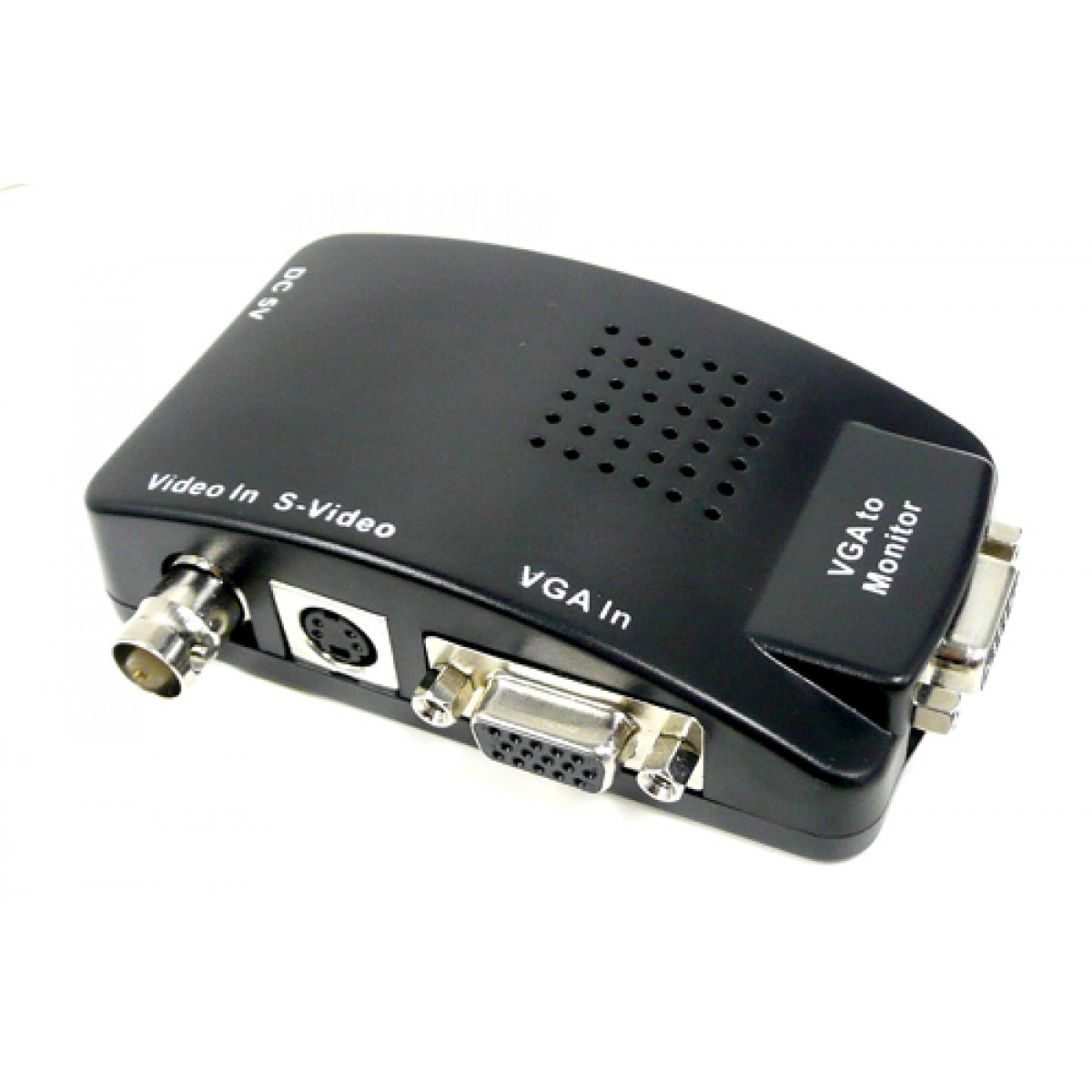

Because VGA is an older technology, this option should be avoided unless there is no other alternative.

If both your CRT and console support S-Video, that might be a cheaper solution when available. An HDMI to VGA converter may be a cheaper cable that connects an HDMI signal from a computer to a VGA connection on an older display.
#Video to vga converter setup 240p
Here’s the POT’s I tweaked, but YouTube user Billkwando also has a good video about it:Īs an FYI, if you’re using a 240p console on a basic, consumer-grade CRT, you won’t see a big difference between RGB (or component) and S-Video…and it’s certainly not as drastic a difference as seen on high-end displays. I didn’t have as good results with the clone’s though I had to tweak the tuning POT’s before it looked right, which should never be necessary with analog video. It was tested and verified on an oscilloscope and it works with 240p, 480i and 480p.ĬSY-2100 & Clones I tested both a CSY-2100 SCART to Y-U-V converter and a clone system (the clones look similar to the one in the upper left picture, but have the screws on the sides, not front. The original CSY-2100 seemed to work well, however they’re expensive and hard to find. Enable Dualview - To turn on Dualview, Right-click the desktop, and then click Properties. On the front of the monitor panel or from the remote, select VGA as your video input source. Shinybow SB-2840 This is a great converter, but the recent release of the much cheaper RetroTINK products has bumped it to second in line. Connect AC Adapter or Battery to the power connector on the VGA Cable and power on you LCD Monitor. These should preserve the signal quality, while allowing an easy way to convert the signals. The “RetroTINK” line of products includes a transcoder that converts between RGB and component. For more info, please check out my upscaler comparison page, as it describes in detail the difference between using RGB to component, vs an upscaler. They might even work well on your flat-screen TV, depending on compatibility. If you’re using a consumer-grade CRT that only has component inputs, these are the best choice. There are a few scenarios where converting RGB to component would be the right choice for your particular setup. This should always result in a zero-lag solution, with video quality varying.

To start, I’d like to make the clarification that in this context, converters just change the signal type There’s no scaling or processing of the image. There are many different reasons you’d want to convert a signal and this page will slowly grow to discuss all of them.


 0 kommentar(er)
0 kommentar(er)
